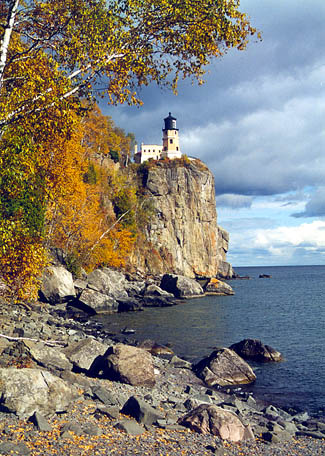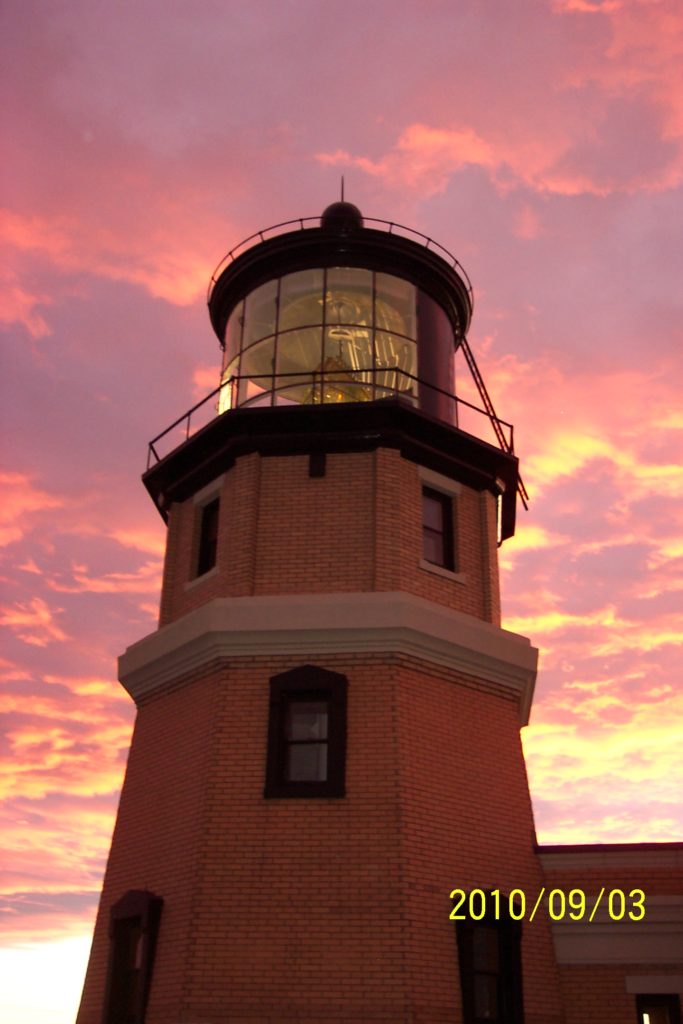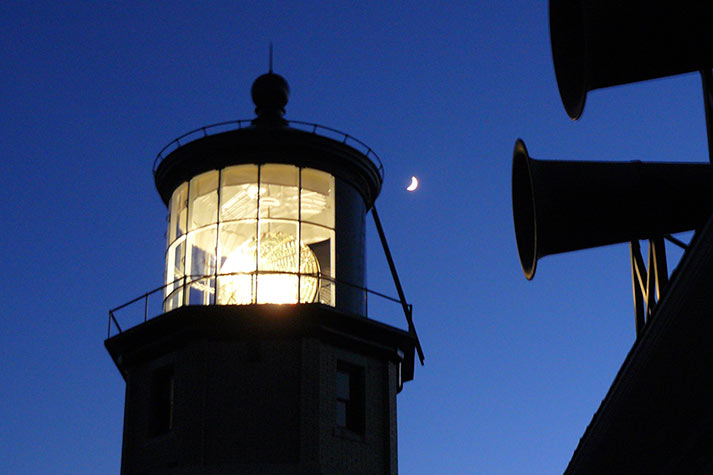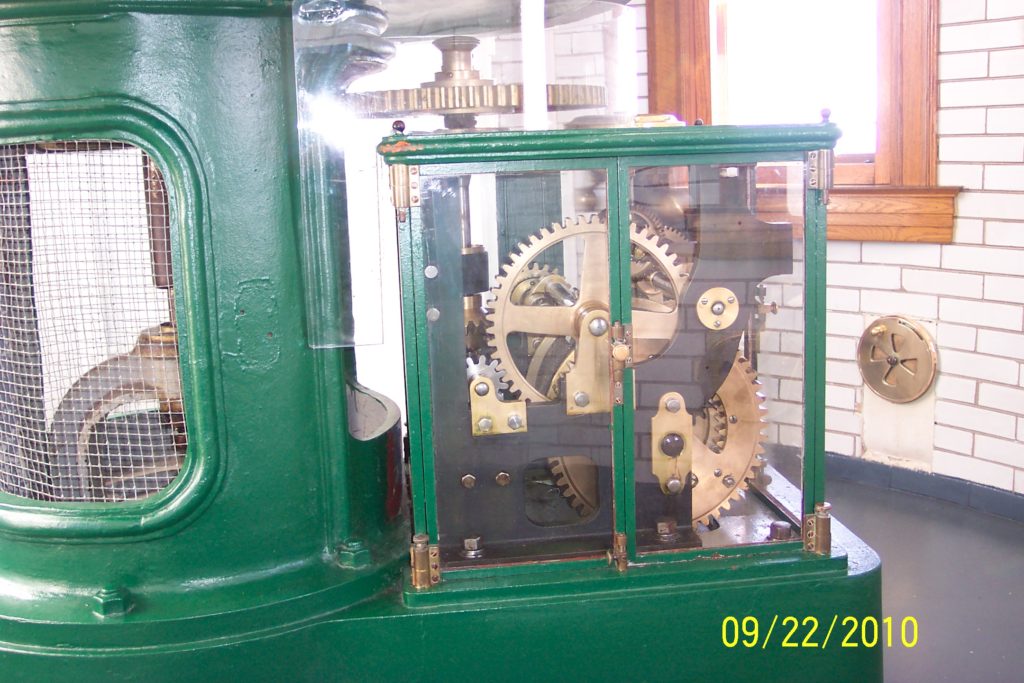These photos are of the SPLIT ROCK lighthouse, on the north shore of Lake Superior in Minnesota. We spent September 2010 as a part of the talented and dedicated interpretive staff there. Located in Minnesota’s Split Rock Lighthouse State Park, it is operated and maintained by the Minnesota Historical Society. First put into service in 1910, 2010 marked the centennial year and celebration was in order, including a special illumination of the original Fresnel lens (a magnificent “bi-valve” manufactured by Barbier, Benard and Turenne), on the first Friday of each month. A very complete “light station”, in addition to the tower itself, the fog signal building, oil house, three keeper residences with their adjacent garage/barns, and remnants of the once extensive tramway still remain. Built on a rock outcrop high above the lake, the tower itself is relatively short. For more on this lighthouse visit: https://www.mnhs.org/splitrock
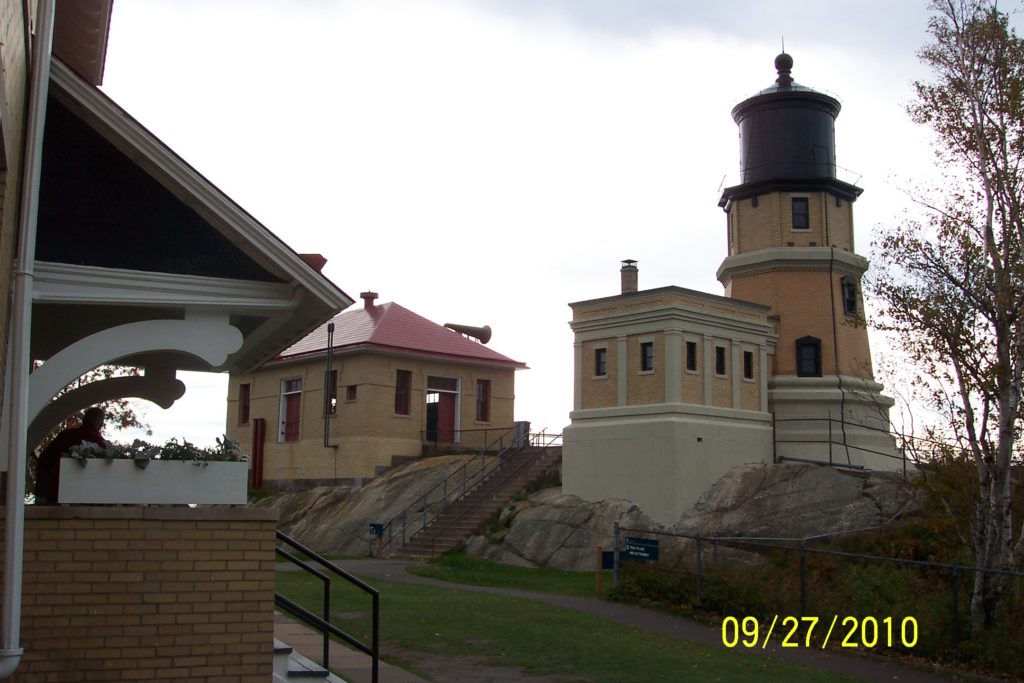
The photo above shows some of the structures that make up the Split Rock Light Station. In addition to the tower itself, with attached work room, the adjacent fog signal building and a portion of the head keeper’s residence can be seen.
The left photo above shows the illuminated lens, as well as the horns that directed the fog signal out over the lake. Although the lens rotates during open visitor hours, it is not normally illuminated, except for the night in November each year on the anniversary of the sinking/loss of the fabled ore ship “Edmund Fitzgerald.”
The right photo above shows the original mechanical, weight-driven gearbox. Replaced by an electric motor in 1940 when electricity reached the site, the gearbox was miraculously recovered and reinstalled as part of the lighthouse restoration. It is one of the few stations where the original Fresnel lens is being rotated by the original mechanical gearbox. Split Rock’s lens revolves on a layer of liquid mercury, one of only a few sites in the U.S. where this system is still in use.
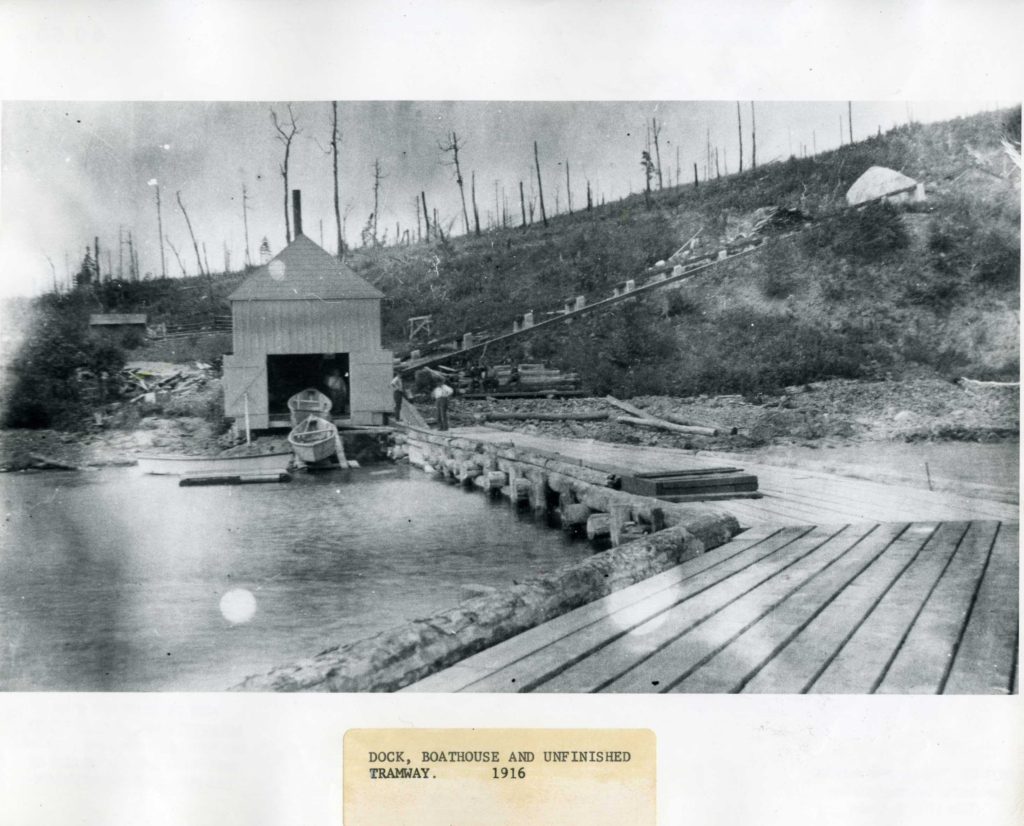
Like many lighthouses on the Great Lakes, Split Rock was built high above the water. At first, supplies and personnel reached the site via a crane-like lift system. This was replaced circa 1916 by a “Tramway” – a cart that ran on rails from a dock down below to the station buildings up above. This view shows the shed that held a steam engine that powered the tram.

